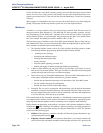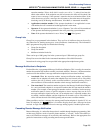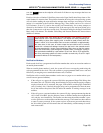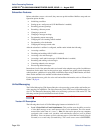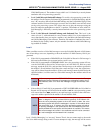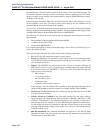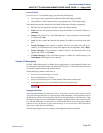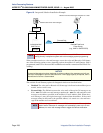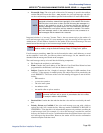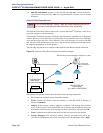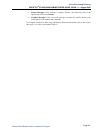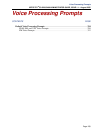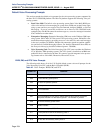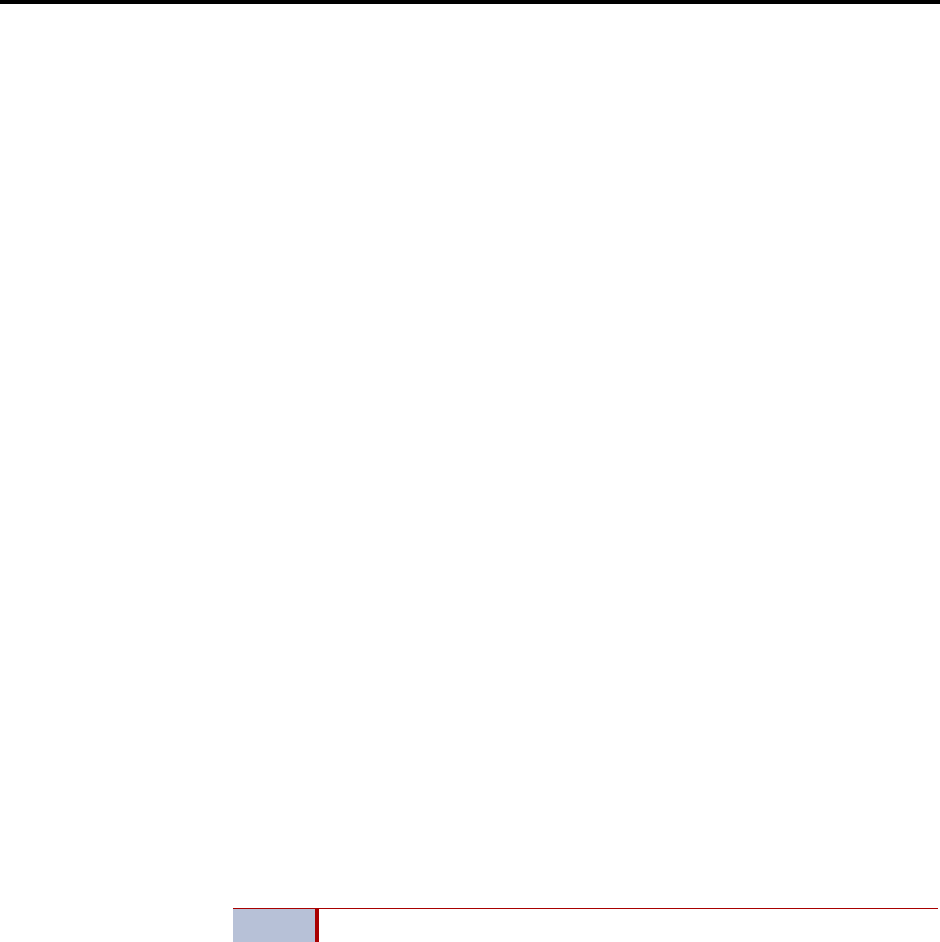
Voice Processing Features
INTER-TEL
®
CS-5200/5400 ADMINISTRATOR GUIDE, ISSUE 1.1 – August 2005
Levels 2 and 3
Page 287
Levels 2 and 3
To use Level 2 or 3 Unified Messaging, you must have the following:
• An existing e-mail system based on Microsoft Outlook/Exchange (MAPI).
• The mailboxes’ E-mail Gateway fields are programmed for “Unified Messaging.”
The Outlook message that contains the Voice Mail will have the following components:
• To: This line will contain the recipient’s name and mailbox number.
• From: This line will contain the sender’s name and mailbox or Caller ID, if known, or
Unknown.
• Subject: This line will say “Voice Mail Message.” If the message has been forwarded,
it is preceded by
FW.
• Sent: This line contains the date and time that the Voice Mail was received by the mail-
box.
• Priority Messages: If the message is marked “Priority,” the subject line will be pre-
ceded by an exclamation mark (!) and, in the Options tab, the Importance field is
High.
• Private Messages: If the message is marked “Private,” the Sensitivity field in the
Options tab will be set to
Private.
• Certified Messages: If the Voice Mail message is marked for certified delivery, the
Track Option on the Options tab is checked.
Version 2.3 Description
For EM, Unified Messaging is available in two configurations: as an Integrated Solution, and
as an Outlook client-based solution. By default, EM includes 25 UM licenses that allow users
to customize features based on the solution chosen.
Unified Messaging features allow users to:
• Receive voice mail messages via e-mail.
• Receive inbound faxes via e-mail.
• Send voice mail messages via e-mail (Outlook client-based solution only).
• Send outbound faxes via e-mail (Outlook client-based solution only).
Integrated Solution
The Integrated Solution (also known as Level 1 in previous versions) allows users to receive
voice mail messages and faxes as e-mail messages with attachments. (An integrated fax port in
the EM unit is used for fax functionality.) The voice mail attachment is in the form of a .wav
file that can be played on most multimedia computers (equipped with a sound card and speak-
ers). The fax attachment is in the form of a .tif file that can be viewed using most graphics
software. Users can choose to receive the messages as voice mail and e-mail (Forward &
Copy) or as e-mail only (Forward Only).
The following diagram shows an example of the Integrated Solution installation.
NOTE UM v2.3 is available only for systems using Enterprise Messaging.




